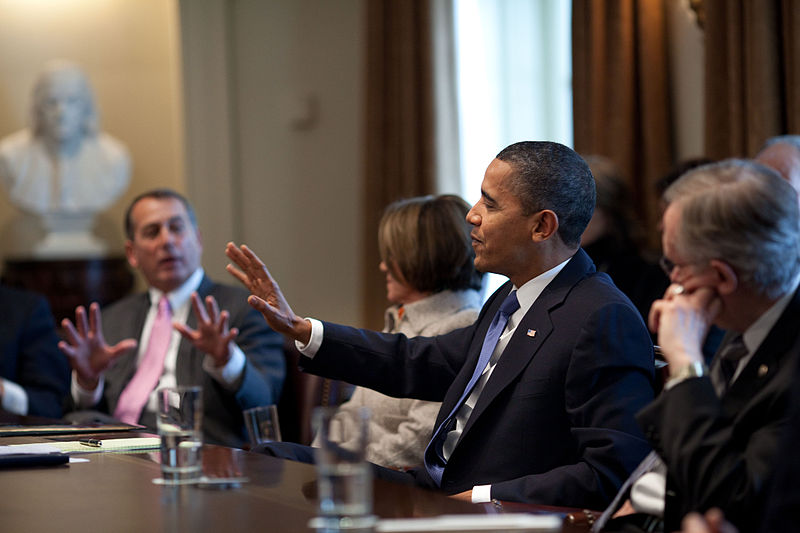On Wednesday, House Speaker John Boehner announced his plans to sue President Barack Obama over the alleged use of executive actions to circumvent laws passed by Congress, in violation of the Constitution’s faithful execution clause. It has not been specified which specific executive actions are being challenged.
The announcement of Boehner’s intent to sue has sent liberals into a flurry of defenses of the President, mostly regarding his use of executive orders, a subset of his executive actions. One of the most widespread defenses, both before and after Boehner announced his suit, is that Obama had no other choice than to issue these executive orders. They were necessary for a functioning government in the face of a do-nothing Congress. However, the historical relationship between Congressional bill passage and executive order issuance suggests potential flaws in this argument.
Using data from the past 20 completed Congresses—from the 93rd in 1973 to the 112th ending in early 2013—the HPR found the number of bills passed and the number of executive orders issued are positively correlated.
The number of bills a Congress passes has a weak but statistically significant positive correlation (r = .59) with the number of executive orders issued in that time. On average, for every marginal ten bills passed, another executive order is passed. Passed bills and orders increase alongside each other.
An even stronger relationship is seen with Congressional inactivity.
There is a strong, significant negative correlation (r = -.78) between the frequency of a Congress’s legislative failures (defined by GovTrack as “bills and resolutions that failed a vote on passage or failed a significant vote such as cloture, passage under suspension, or resolving differences”) and the frequency of executive orders. For each marginal legislative failure, executive orders decrease by an average of one and a half.
So in today’s highly polarized legislative environment, where bills and resolutions are failing to pass through Congress rather than being altered until compromise is reached, history suggests the President too would be relatively inactive, yielding few executive orders.
Obama has certainly fallen in line with this expectation. He has issued 70%, 98%, and 104% of his expected number of executive orders based on bill passage in each successive Congress, respectively. With the latter trend based on legislative failures, Obama has issued 88%, 101%, and 107% of his expected number of executive orders.
Therefore, it is reasonable to conclude that a relationship exists between bill passage and order issuance, and Obama’s use has conformed to this correlation.
What does this mean for the argument about the necessity of Obama’s executive orders? The argument states that the dearth of bills passed by Congress requires an increased number of executive orders to maintain a well-functioning government. Since lack of bill passage has historically corresponded with lack of executive orders, either the government has not been well functioning since the passage of the New Deal, or this positive relationship simply does not exist.
Regardless of which side of the debate one falls on, the point stands that given this trend, it does not appear that executive orders have historically been used to compensate for Congressional gridlock, meaning the liberal argument is incorrect. It is important to note, however, that if the argument is expanded to include all of Obama’s executive actions, rather than just his orders, this conclusion does not necessarily hold.
Although Obama’s ‘necessity of a functioning government’ defense is invalid for executive orders, there are other measures that demonstrate he has not stepped out of line, at least in comparison with his predecessors. Presidential use of executive orders to contradict bills passed by Congress is well documented; President George W. Bush, for instance, used executive orders to block stem cell research funding (Executive Order #13435) and allow religious organizations to bypass anti-discrimination laws required to receive federal funding (Executive Order #13279). Further, the volume of Obama’s executive orders—averaging .09 orders per day as of June 17th—is the lowest of any Presidents’ since Grover Cleveland in the late 1800s.
But if the question is one of constitutionality of an order or one of his executive actions, the President’s fate will be decided by the specific actions being challenged. Boehner plans to bring a bill authorizing the Bipartisan Legal Advisory Group to sue Obama to the House floor in July.
Correction, June 26, 2014: An earlier version of this article stated that the suit was over Obama’s executive orders, whereas actually Boehner has only said that it is about executive actions in general.
Photo Credit: Wikimedia Commons
